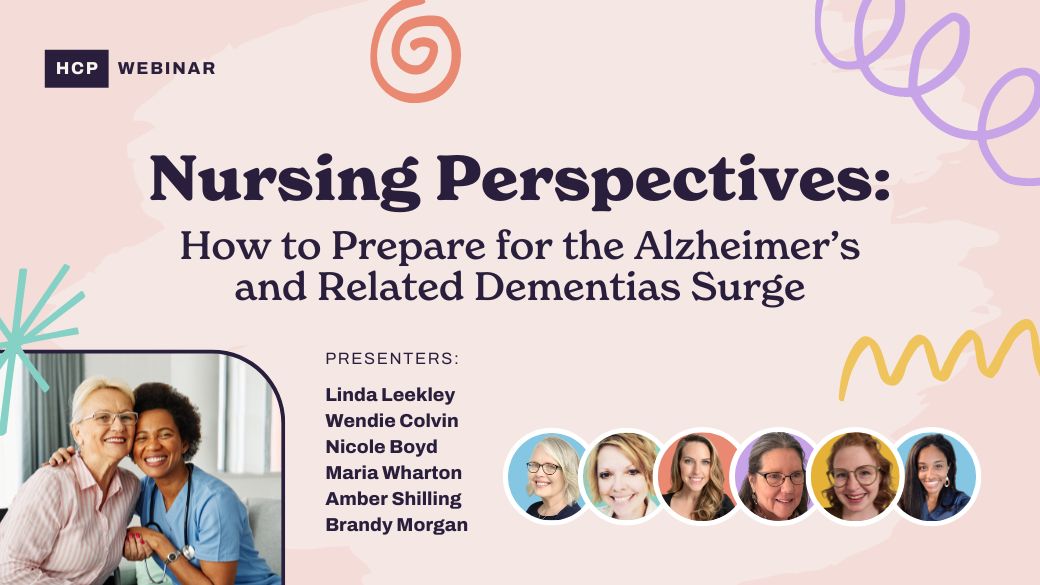There are many situations where managing behaviors can become difficult for healthcare professionals. Discover how you can us person-centered care to address challenging behaviors and deliver a positive care experience for the healthcare team and the affected person.
As post-acute care professionals, we encounter a diverse array of behaviors among people, each with their own unique set of challenges and complexities. People may express challenging behaviors because they are living with dementia and have difficulty controlling their emotions and actions. A new infection can completely change someone’s normal behavior pattern. Perhaps a new diagnosis or even a new medication alters the behavior of a person. Particularly in post-acute care, as people advance through levels of the healthcare continuum, a change in living situation or loss of independence can cause challenging behaviors.
There are many situations where managing behaviors can become difficult for healthcare professionals. What can you do to more easily address challenging behaviors and deliver a positive care experience for the healthcare team and the affected person? HCP has created six person-centered concepts as a set of keys to unlock meaningful connections and develop a rapport with the people in your care. By placing the actual person at the center of our approach, we not only foster well-being but also cultivate environments that honor everyone’s individuality, dignity, and autonomy.
HCP’s Person-Centered Care Concepts:
- Effective Listening
- Valuable Conversations
- Shared Decision-Making & Goals
- Respect of Choices
- Successful Care Planning
- Emotional Understanding
Let’s put it into perspective in real life. Consider these scenarios and learn the difference you can make when you focus on the person and what you can do to meet their unique needs.
How to Use Person-Centered Care for Managing Challenging Behaviors: 3 Real-World Scenarios
Scenario #1: James
James moved into an assisted living community after his husband, Roland, passed away. Roland was the partner who kept the household in order. He was a great cook and he had been assisting James with dressing and grooming. James’s nephew had been checking in on him after Roland passed, and he noticed that James wasn’t taking care of himself. Garbage was piling up, James’ appearance was unkempt, and food deliveries were going to waste. After many conversations between James and his nephew, James agreed to move to an assisted living apartment.
James has been living in his assisted living apartment for two weeks now. He doesn’t leave the apartment for meals or social activities and most of his meals go uneaten. The care professionals in the community have encouraged him to join the other residents for meals. James refuses, yelling at them to leave him alone. He remains in bed most of the day and turns away from the staff when they knock and enter the room.
What can the staff do to focus on James and his unique situation?
Imagine that you are in James’ shoes. You are in a new place with unfamiliar people. Every day, it seems like they want you to do something you aren’t interested in. You’ve never been a people person and the food here doesn’t appeal to you. Encouraging someone to engage socially or eat a meal can only go so far when you don’t know what it is that they are experiencing.
Applying Person-Centered Care Concepts to Manage James’s Challenging Behavior
Valuable Conversations
Engage clients in conversations where learning more about them is the main goal, not getting them to accomplish something. In James’ case, offering to sit with him and talk about what is on his mind could go a long way in opening up the dialogue. A productive conversation could be James sharing memories about his late husband, what activities they enjoyed, and the types of meals his husband used to cook.
Shared Decision-making and Goals
During your valuable conversation with James, you see that he is likely exhibiting these challenging behaviors because of losing Roland and experiencing depression symptoms. Asking James if he would like to choose a different meal plan can allow him more autonomy with decision-making. Knowing more about James and what his interests and activity preferences are can add value to the process of creating a plan of care and healthcare goals. Remind James that he is in control of his care and that all the staff at the assisted living community are there to support him in making decisions.
Scenario #2: Clark
Clark lived on a farm his whole life until he had a recent hospital stay. His neighbor had found him setting fire to broken furniture on his front porch. This neighbor tried talking to him to see what was going on, but Clark was confused and acted as though he didn’t recognize him. His neighbor called 911 and Clark was taken to the hospital for an evaluation. After his hospital stay, he was admitted to a continuum of care retirement community and has a room on their specialty dementia unit.
The day after he was admitted, his assigned nurse heard a commotion at the end of the hall. Clark was wandering the unit and entered a female resident’s room. This resident was upset and frightened and attempted to push Clark out of the room. The nurse approached Clark, who was scowling at the other resident and attempted to redirect him by gently grasping his elbow. Clark turned and pushed the nurse’s arm away. As four other staff came to assist, Clark became more agitated, baring his teeth and swinging at all the staff members.
What could have been done to improve this scenario?
Think of yourself having Clark’s experience in this situation. You’ve been in a lot of unfamiliar environments over the past few weeks. You keep wondering how you can get back to your farm, so you walk around and look for a way out. You find a door that might be an exit but there is a woman there. She is yelling at you and pushing you. You don’t understand what is happening but feel the urge to fight back. Another woman surprises you by grabbing onto you and everything feels like a threat. Especially when more people come, you don’t know if you can protect yourself against all of them.
Applying Person-Centered Care Concepts to Manage Clark’s Challenging Behavior
Applying person-centered care for dementia-related behavior symptoms can be effective when supporting Clark in this situation.
Successful Care Planning
Effective care planning needs to involve the person, their family, and the entire interdisciplinary healthcare team. A successful care plan for Clark would mention that he tends to wander and should be monitored when near other resident rooms. Another part of his care plan could indicate that he becomes more aggressive with multiple staff members surrounding him, so the goal would be to get his attention without physically touching him and have only one or two staff involved in redirecting him.
Emotional Understanding
When intervening in a situation brought on by a challenging behavior, be sure to assess the client’s current emotional state. Taking a minute to assess the situation before physically intervening can prevent injury to the client, you, and other staff members. Having a better understanding of emotional cues could have helped the staff in Clark’s situation. He was scowling at the other resident when he was approached, he was physically touched without warning, and then he was overwhelmed by many other staff members approaching him. Noticing the scowl as an indicator of Clark’s emotional state could have informed the nurse of how best to approach him in this scenario.
Scenario #3: Esther
Esther lives in a long-term care center and has been there for ten years. One day, her favorite care professional, Garret, knocks on the door to announce breakfast. He finds Esther in the bathroom getting changed out of her day clothes back into a nightgown and putting rollers in her hair. Garret lets her know that breakfast is ready in the dining room. Ester tells him that she just had dinner and she is going to bed.
She doesn’t usually refuse breakfast or mix up her days and nights, so he asks her if anything else is going on. Ester tells him that she has been having pain when urinating and feels sick to her stomach. Garret listens to Esther intently and assures her that they will have food ready for her when she wants something to eat. After their conversation he reports her symptoms to the charge nurse.
Garret put himself in Esther’s shoes and focused on delivering person-centered care.
Think about what Esther must have been feeling in that moment. Imagine that you are her that morning. You aren’t feeling well and notice that you are wearing daytime clothes. They are uncomfortable, and you just want to lie down. If you’re tired, it must be time for bed, so you change into your nightgown and fix your hair in curlers. The nice man that helps you comes around and tells you it’s time for breakfast…that can’t be right. You tell him so and let him know what’s making you feel sick. He agrees that there will be food ready when you’re hungry. You are thankful he is such a nice man, no arguing at all!
Applying Person-Centered Care Concepts to Manage Esther’s Challenging Behavior
Effective Listening
Garret picked up on non-verbal messages indicating that something different was going on with Esther. Understanding what Esther was communicating verbally and non-verbally was important in this situation so that Esther’s symptoms were reported accurately.
Respect of Choices
Notice that Garret met Esther where she was at. He did not argue with her about it being time for breakfast. Her choice to return to bed was honored in that moment and her confusion was not judged. Assuring Esther that food would be available at a later time fosters an environment of trust. She is able to make decisions for herself without fear of upsetting the staff or missing out on important care.
The next time you are faced with managing a challenging behavior situation, think of these six person-centered care concepts. The situation can likely be improved by focusing on the person! Individualize your care and imagine what the person is going through in these difficult moments. You will find that each of the person-centered care concepts can be utilized in unique ways to resolve difficult situations. Take notice as you care for people every day and see if your outcomes become more positive as you manage challenging behaviors.
What approaches have you found successful or ineffective with challenging behaviors? Let us know in the comments section.








